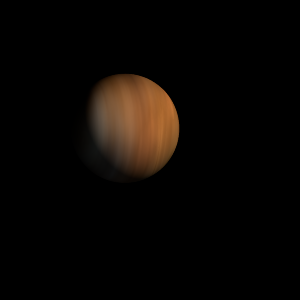|
|
Space Astro
|
Info for exoplanet "Calxilade"
| Scientific (actual) data |
|---|
| Name | KMT-2018-BLG-0885 b |
| Planet status | Confirmed |
| Planet mass | 39 |
| Semi major axis | 1.07 |
| Discovered | 2023 |
| Updated | 2023-05-12 |
| Publication | Published in a refereed paper |
| Detection type | Microlensing |
| Mass measurement type | Microlensing |
| Star name | KMT-2018-BLG-0885 |
| Right ascension | 268.96° |
| Declination | -28.51° |
| Star distance | 6890 |
| Star mass | 0.29 |
| Wikipedia article | KMT-2018-BLG-0885 b |
Back
| |
| Fictional info (?) |
|---|
| Suggested name | Calxilade |
| Planet type | Huge cold gas giant |
|
| Atmosphere | Ozone | 27% |
| Hydrogen deuteride (HD) | 19% |
| Argon | 18% |
| Ammonia | 14% |
| Carbon monoxide | 14% |
| Methane | 7.5% |
| Nitric oxide | 0.042% |
| Formaldehyde | 3.2E-5% |
| Atmospheric pressure | 25 bar |
 |
| No known satellites |
| Google search for Calxilade |
|
Website by Joachim Michaelis
|
|
|
|